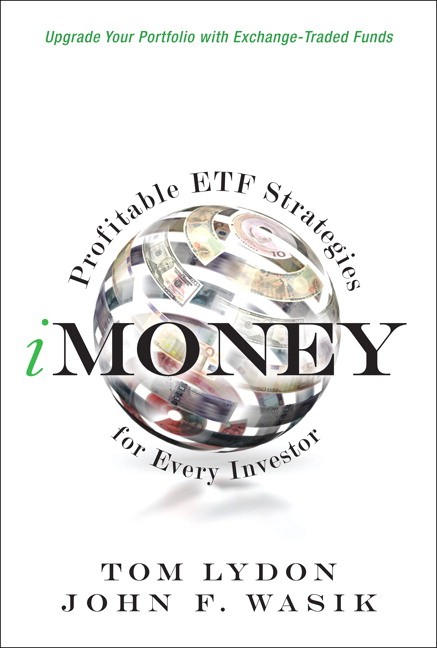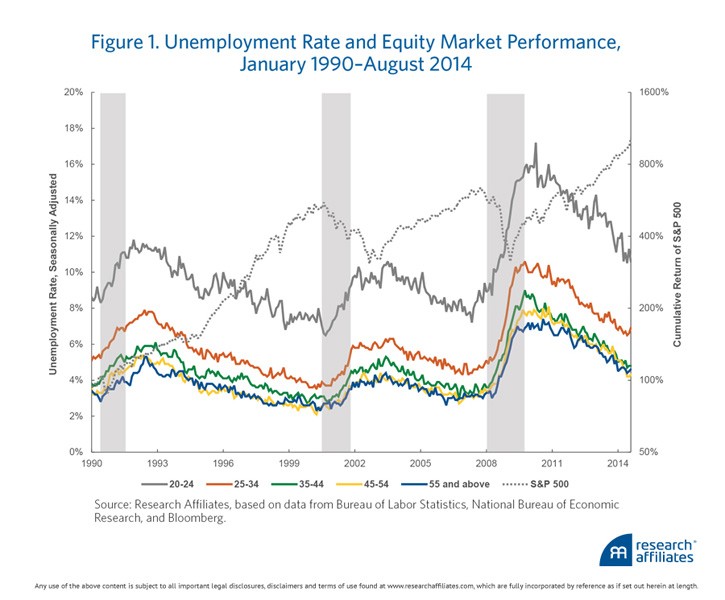Strategists Suggest The Best ETF For Young Investors
Post on: 1 Апрель, 2015 No Comment

Stay Connected
It’s a question many young investors want the answer to: what is the single best exchange-traded fund they should own?
The options can seem overwhelming. In fact, there are now 1,080 ETFs trading in the US, with assets of more than $1 trillion, according to Strategic Insight. These funds offer diverse investment strategies, everything from shorting gold (GLL ) to going long on Malaysia (EWM ). There are now even 34 actively managed ETFs with $2.4 billion in assets.
A lot of recent college graduates and young couples, just starting to think about where to commit their hard earned capital, might be curious about which ETF presents the smartest prospects. For answers, Minyanville recently polled a select handful of market pros for their advice. We asked these gurus for their guidance about which fund, if they had to recommend just one, made the most sense for a 20-something investor.
Of course, before delivering their picks, our experts also offered some general, common-sense techniques that should aid all young investors as they navigate the capital markets.
Smita Sadana. the founder of Sunrise Capital and a professor here at Minyanville, reminds whippersnappers of the following: Never invest all your money in any one security, meaning diversify holdings across asset categories, geographies, and currencies; ensure dollar-cost averaging of the investment, which helps generate strong returns over time; and always try and consult a professional before making an investment.
With those caveats in mind, our strategists offered their gold-plated ideas. Their counsel proved very wide-ranging, from mid-cap growth funds to alternative energy funds. However, these are the ETFs that they think, over time, will deliver the best returns for young investors on the lookout for money-making opportunities.
Jon Markman of Markman Capital Insight says that his research shows that the single best position to own if you just want to keep investing very simple is this: the iShares Midcap Growth ETF (IJK ). This is a broad fund that includes the 200 stocks in the S&P Midcap 400.
These 200 companies have the financial wherewithal and management savvy of the large-caps, but still have the nimbleness and ambition of a small-cap, Markman says. If you are ever asked by a young couple or college graduate or co-worker for a single fund to own if they want to capture upside of the American market without taking on the big risks of a more narrowly focused sector fund, this is it.
The fund’s holdings include Edwards Lifesciences (EW ), Perrigo (PRGO ), and Skyworks Solutions (SWKS ).
Markman points out that two leaders of the IJK of the past few years that recently graduated to the S&P 500 Index were F5 Networks (FFIV ) and Netflix (NFLX ). They started in IJK when they were around $2 billion in market cap and exited in December when they grew to around $10 billion. That period in which they grew fourfold is what investors capture with the IJK fund, the strategist says.
From her perch, Smita Sadana argues that the sector best positioned to outperform over the next decade is the Materials sector. Her favorite investment vehicle for this sector is XLB, the Materials Select Sector SPDR.
Its biggest holdings include companies such as Freeport McMoran (FCX ), Dupont (DD ), Dow Chemical (DOW ), Monsanto (MON ), and Newmont Mining (NEM ). The XLB is up 4% year-to-date; up 30% in the past 12 months.
I believe that we are in a period of secular growth in demand for most commodities represented by this sector, led by strong growth in China, India and Latin America, says Sadana.
Interestingly, she notes, this ETF has outperformed the S&P500 index in the 1 year, 2 year, 5 year and 10 year time-frames. Sadana believes it will continue to do so in the years to come.
Quint Tatro of Tatro Capital also prefers a narrowly focused sector fund. Specifically, he argues that young investors should consider a new-technology ETF such as the Guggenheim Solar ETF (TAN ), which provides exposure to the solar energy sector.
The question regarding solar is not if, but when it will become a mainstream product, says Tatro. Rather than try and pick the early winners I believe an exchange-traded fund gives the investor exposure to a vast array. The ETF is new and unproven and thus will be wild and crazy, but with enough time on the investor’s side, I suspect it will yield incredible results.
The benefits of such a vehicle, say analysts, include the broad and increasing concerns about energy independence, emissions reductions and affordable energy, all of which have heightened demand for alternatives such as solar power. Also, gaining exposure to several of this vehicle’s Chinese and European holdings can be hard for US investors, but the TAN offers a cheap and accessible way of investing in solar power globally.
Holdings in the TAN include First Solar (FSLR ), Trina Solar (TSL ), and MEMC Electronic Materials (WFR ).
Vinny Catalano, president and global investment strategist with Blue Marble Research. offers his top choice for the young investor: PowerShares Water Resources (PHO ). This exchange-traded fund tracks an index of companies operating in the water space: water treatment, water utilities, and pipe and pump manufacturing.
The thesis here is a simple one: as the world population increases so too does demand for clean water.
Water resources are in a long term secular uptrend and this ETF enables all investors with a longer term horizon to benefit from that trend, says Catalano. The need for clean water is in increasing demand. Valuation is good and growth is exceptional.

Analysts additionally note that, of the water ETFs currently available, the PHO is by far the largest and most liquid, meaning it has more shares that trade more often so it’s effectively easier to buy and sell, and its fee is the lowest.
The PHO has popped 25% in the past 12 months.
Michael Rawson, Morningstar’s ETF analyst, says that investors with long investment horizons should consider gaining exposure to small-cap companies in the emerging markets. His pick for this purpose: the WisdomTree Emerging Markets SmallCap Dividend ETF (DGS ).
WisdomTree’s indexes are unique, says Rawson, because of their fundamental-weighting methodology, which weights companies by the size of the dividends they pay, rather than their market capitalization. This ensures that all companies in the index have achieved a minimal degree of profitability to pay their dividends and also provides a substantial value tilt.
Given the tendency for returns to mean-revert over time, Rawson says that he wouldn’t expect the strong performance witnessed over the last decade in the emerging markets to continue without substantial volatility.
However, young investors with a long time horizon should consider allocating a small part of their portfolio to this fund, he says.
This ETF has returned 9.95% annually during the past three years, outperforming 99% of peers.
A final option comes from Kevin Grewal, the founder, editor and publisher of ETF Tutor .
He says that the Vanguard Total Stock Market ETF (VTI ) is one of the best all-around ETFs for total stock market exposure and is truly built for the long-term investor. VTI has one of the lowest expense ratios in the ETF space, at 0.07%, and focuses on large-cap holdings with ample exposure to mid-caps and small-caps.
In addition to being relatively cheap and offering diversification, Grewal says, VTI is likely to reap the benefits of economic growth and improvements in the developed world as well as increasing purchasing power of consumers in emerging markets.
The majority of VTI’s top holdings, which include Exxon Mobil ( XOM), Apple (AAPL ), Microsoft (MSFT ), General Electric (GE ) and International Business Machines (IBM ), generate a significant amount of revenue and profitability both domestically and internationally.














